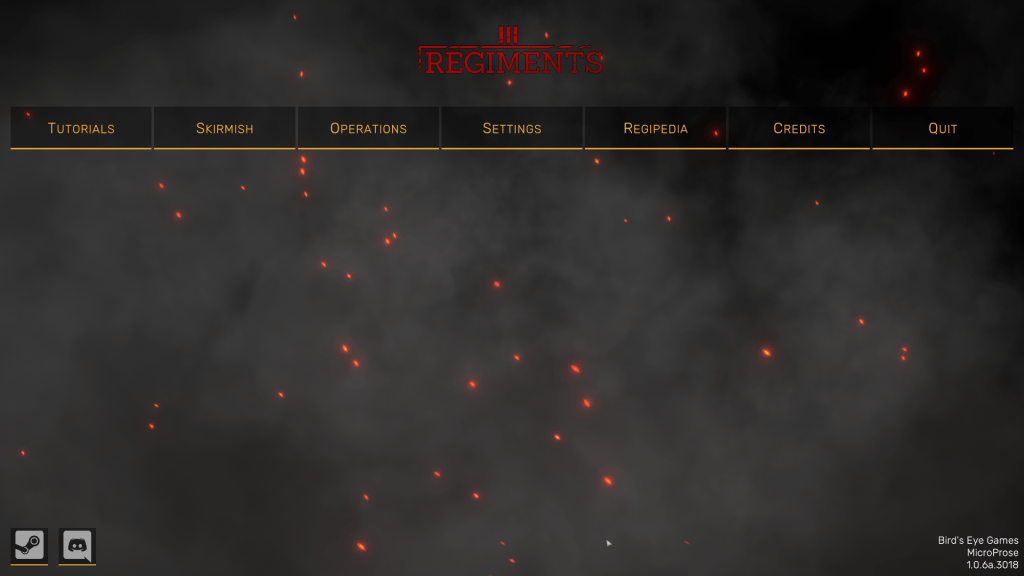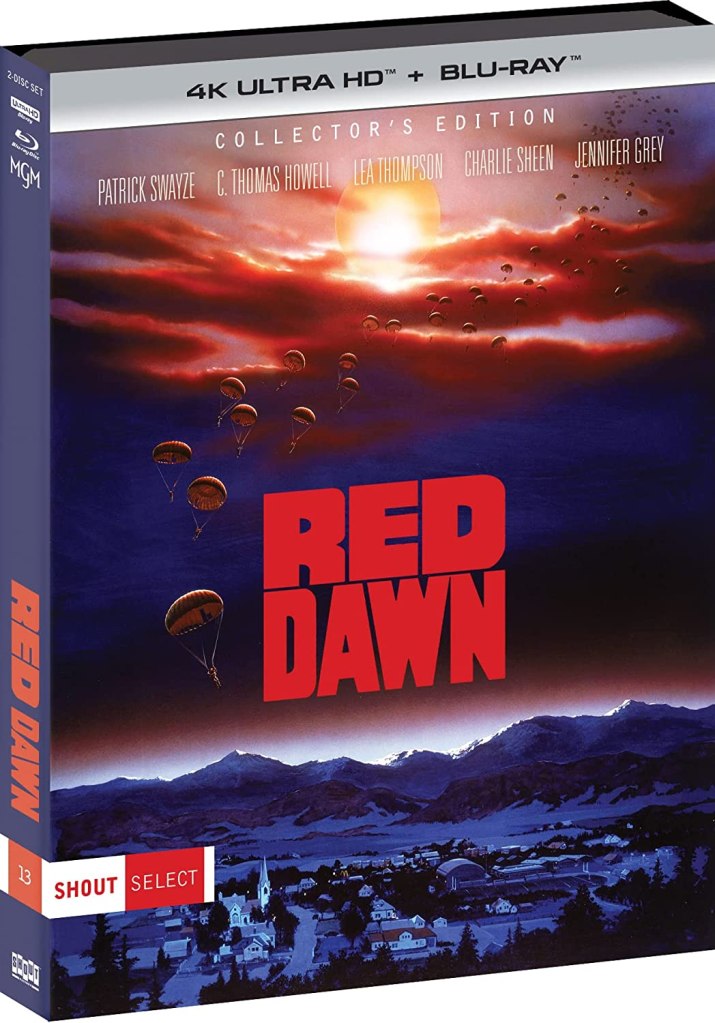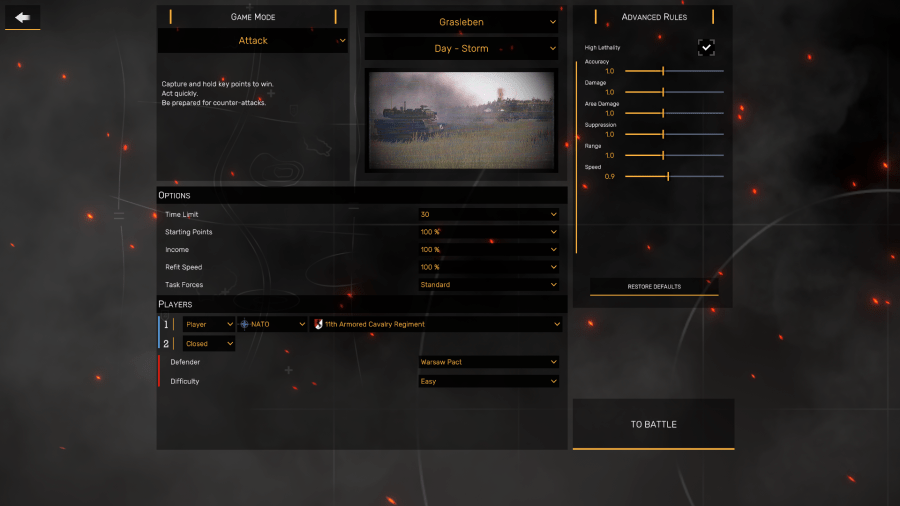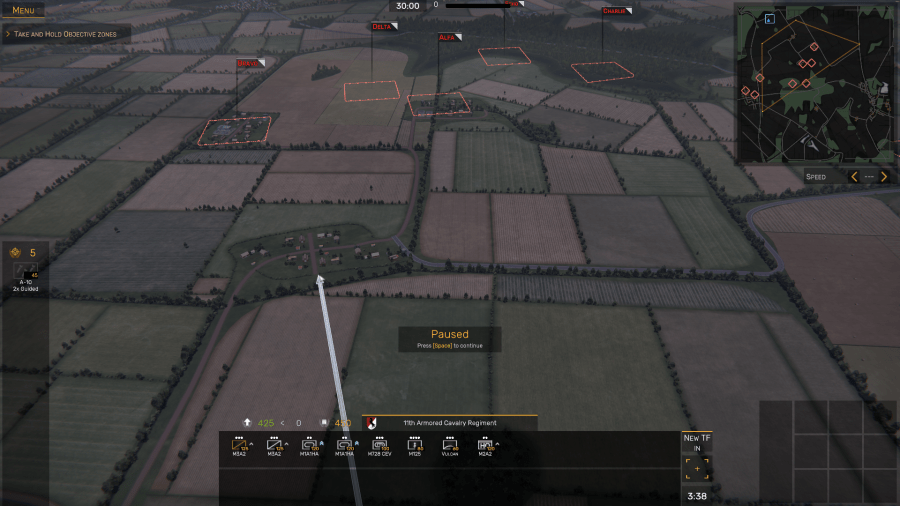
Introduction – Regiments: A Game About Cold War I Released During Cold War II

I grew up during the second half of the first Cold War between Russia (then the core republic of the Union of Soviet Socialist Republics) and the Free World led by the United States and its allies. For almost half my life, I lived with the possibility that a crisis in the Middle East, Central Europe, the Korean Peninsula, Southeast Asia, or even the Caribbean[1] might spark a Third World War between the two dominant superpowers.

Popular culture is a reflection of the times in which movies, books, TV shows, comics, and games are created, and many of us Cold War kids confronted our fears by watching allegorical movies such as 1953’s War of the Worlds, a film that on the surface was an updated adaptation of H.G. Wells’ 1898 novel, but had a subtext of American anxiety over a nuclear war with the Russians, reading novels such as Sir John Hackett’s The Third World War: August 1985, or playing computer games with Cold War-turned-hot scenarios along the lines of MicroProse’s NATO Commander and M1 Tank Platoon.
While that Cold War – thankfully – did not go hot due to the efforts of various American and Soviet leaders, including Ronald Reagan and the recently deceased Mikhail Gorbachev, and the collapse of the USSR between 1989 and 1991, the Free World finds itself in a new Cold War with a Russia controlled by a ruthless autocrat – Vladimir Putin – who is intent in recreating a non-Communist but an authoritarian version of the Soviet Union and despises Western democratic ideals.

I can’t say for sure if the Cold War-turns-hot genre of wargames is popular among game designers because it evokes nostalgia for the games of the 1980s and early ‘90s, or if games such as Flashpoint Campaign: Red Storm, Cold Waters, or the recently released Regiments (Bird’s Eye Games/MicroProse) are an expression of anxieties over Cold War II, especially since Regiments came out a week before the six-month anniversary of Russia’s invasion of Ukraine.[2]

I bought Regiments on the day it was released on Steam, partly because I had been looking forward to its release for a few years, but mostly because it was offered at 25% off the regular price during the game’s first week of release.
If you’ve been reading my posts about Regiments in this blog – for which I thank you! – you know that I’ve been learning how to play the game “on the fly.” Yes, the game comes with an online manual – Regipedia[3]– and includes several Tutorials that serve as Basic and Advanced Training for new players. And I have availed myself of those in-game resources. But you can’t truly learn how to play Regiments (or any other game, really) until you play the real missions, whether you choose to do the single battle thing (Skirmish mode) or the campaign (Operations).
Why Grasleben?

Between August 16 and yesterday afternoon, I played sessions of Regiments almost every day. I’ve attempted several scenarios in the Skirmish section, including a harrowing mission (Runway) in which my units must capture an enemy airfield somewhere in West Germany.
And, of course, as in every other wargame I’ve played in the Cold War-turned-hot genre, I’ve won a few battles, but – at least while I’m still learning how Regiments allocates units to both the human player and the artificial intelligence (AI) opponent – I am losing more battles than I’m winning.
I decided that one way to learn how to survive (and thrive) in Regiments’ apocalyptic version of 1989 is to pick one scenario – in this case, Grasleben – and play it often, with different units and from different NATO countries[4], until I am proficient at it.
Lesson #1: Know Your Battlefield, Plan Accordingly

In preparing for battle I have always found that plans are useless, but planning is indispensable. – General of the Army Dwight D. Eisenhower
I have been playing computer wargames for 35 years now, and although some of them have been flight simulators along the lines of the F-15 Strike Eagle series, most of them are either map-and-symbols strategic level games such as Crusade in Europe or tactical-level real-time games like Armored Brigade, Wargame: AirLand Battle, or the smaller scale M1 Tank Platoon.

All these land warfare games include different types of military engagements, including attack, mobile defense, static defense, and the dreaded meeting engagement in which two opposing forces are both advancing and running into each other on their way to their objectives. And as anyone who has even superficial knowledge about how the military does its work, you need to look at the ground – whether it’s on a map like in Crusade in Europe or the actual digitally-rendered location as in Regiments – and make at least a rudimentary plan of action before sending your soldiers into the fray.

One makes plans to fit the circumstances and does not try to create circumstances to fit plans. – General George S. Patton, Jr.
At the start of the Battle of Grasleben, you don’t have any reports from your S-2 (intelligence officer) that tell you where the enemy is, his strength, or even the unit you are going to be fighting against. You just see eight Objective Zones (OZs) labeled Alfa through Hotel, your immediately available units, and 550 “deployment points,” which are the currency you use to deploy units onto the battlefield.

After you survey the terrain and identify areas where a Soviet force might set up ambushes and “kill zones,” you should use your deployment points to assemble a balanced first task force that includes at least:
- One section of Bradley Cavalry Fighting Vehicles for reconnaissance
- One platoon with M1 Abrams main battle tanks
- Two platoons of mechanized infantry
- One platoon of M106 107mm mortars for indirect artillery support
- One section of three M163 VADS Vulcan mobile anti-air guns. They aren’t 100% effective against every type of Soviet aircraft and are vulnerable to well-executed attacks from tanks, artillery, and Mi-24 Hind gunships. Still, M163s do suppress enemy air attacks, causing pilots to “flinch” as they panic and thus miss their targets. Every so often, VADS manages to actually shoot down a plane. So, this weapon is not totally useless
This is, of course, based on the units available when you choose the American 1st Brigade/3rd Armored Division. Other units from different “type” divisions will have other types of main battle tanks, armored personnel carriers, and helicopter gunships that were in service in 1989, so of course, your selection will vary.

As tempting as it might be, avoid selecting “pricey” units such as the AH-1F Cobra gunship[5] when you assemble your first combat team. Get at least two infantry units and one platoon of tanks, plus some scout, arty, and anti-air (“flak”) specialist units. You can buy the more expensive units later; Regiments slowly adds deployment points as the battle continues. (I have not read the Regipedia in its entirety, so I am not sure if units you “kill” earn deployment points that are added to your “bank account.”)
“A good plan violently executed now is better than a perfect plan executed at some indefinite time in the future.” ― General George S. Patton, Jr.
Even if you pause the game and aren’t “running down the clock” so you can plan your attack, don’t make a too-detailed, step-by-step plan in your head and bind yourself to it like a limpet. That is the Soviet/Russian model, and not only is it not in U.S. Army (or NATO) doctrine, but it rarely ever works in a game like Regiments. The AI enemy also gets a vote in what happens – as a real-life opposition force (OPFOR) would – and will not just lay there passively and say, “Oh, Mr. Enemy, here I am! Kill me!” Choose your initial objective carefully, try to anticipate where the defenders might have anti-tank kill-zones for their tanks and infantry to hide in. (Hint: wooded areas and hilly countryside make great places for ambushes or assembly areas for counterattacks.) Keep your concept of attack simple and be prepared to be flexible. Those crafty Russians can and will launch counterattacks, so keep an eye out for enemy troops coming at you from the flanks.
If you have enough deployment points to put more units on the field before you make your first attempt to capture an OZ, create a reserve force to either support your attack or respond to an enemy counterattack.
Lesson #2: If You Can See the Enemy, You Can Kill the Enemy (and Vice Versa)

In war, stealth and concealment are vital for survival on the battlefield, especially in the 1989-era environment depicted in Regiments. Every army in the world now uses various camouflage or olive drab color palette on vehicles, uniforms, and even aircraft to make it hard for the enemy to spot them with the Mark I eyeball.
That having been said, your units all have different equipment – such as binoculars, thermal sights, periscopes, and other visual aids – that can help your soldiers, vehicle crews, gunners, and pilots spot hidden enemies. Every unit has certain abilities/limitations regarding line-of-sight (LOS) visibility; scout units and recce helicopters such as the OH-58 Kiowa usually have the best LOS abilities, and if you can add task forces to your main unit that have either M3 CFVs or Kiowa/AH-64A Apache teams, do it.

The M3s are handy to have at the start of a battle because they are usually available in your first unit selection menu and only cost 90 deployment points. Their specialized mission means they have the best long-range visibility, and because they only have a crew of 3 and don’t carry a squad of infantry in the back, they carry more TOW anti-tank missiles than the basic M2 Bradley Infantry Fighting Vehicle.
The other side of the coin is that in modern warfare, the enemy has units with similar abilities as yours. Soviet equipment may not always be better qualitatively than yours, but it’s often “good enough” for the job, and if a Russian BMP-2 or even a BRDM scout vehicle with a dismounted anti-tank guided missile team spots you, it can see you, and even kill you.

Use your scouting units as much as you can, but don’t send them out too far from your main force where friendly units can’t support them. Use terrain – such as forests, hills, and even urban environments – as cover whenever possible, and even though Regiments will assign a new unit to replace a destroyed one, it’s better to retreat if you lose one or more of your scout vehicles – the surviving teams will gain and retain combat experience and earn “veterancy,” thus they will fight a bit better when they return to battle.
I’ll do another Lessons Learned post soon, but for now, these two will do for today.
Good luck, Regiments player, and good hunting!
[1] Or, really, anywhere that either the United States or the Soviet Union had “vital strategic interests.”
[2] To be sure, the small European studio that designed and created Regiments started working on the game several years ago; it was on my Steam wish list of upcoming games as long ago as 2019, so MicroProse’s timing for publishing this game – which features many of the Russian tanks and other weapons systems deployed in Ukraine – had nothing to do with real-world geopolitical events.
[3] A tip of the hat to one of “classic” MicroProse’s most famous and popular games, Sid Meier’s Civilization, which has a most useful in-game reference called the Civilopedia. I don’t know for certain if the game designers deliberately called their online resource Regipedia as a direct homage or whether it’s purely coincidental. Considering that six versions of Sid Meier’s Civilization have been created and published since 1991 (only the first two by MicroProse; most of the other versions were published by Meier’s Firaxis Games) it’s hard to believe the similarities are a coincidence.
[4] Players in Regiments can also choose to lead Warsaw Pact forces as well. In fact, in Operations, you must play as the “bad guys” every so often, because each separate battle is scripted for a specific unit/faction. In Skirmish mode, though, I avoid playing as the Soviets; I am not a fan of Russia at this time, so….
[5] The Cobras are cool lethal derivatives of the venerable Bell UH-1 Iroquois “Huey” utility helicopter. They are armed with cannon, TOW anti-tank missiles, and unguided rockets that pack a powerful punch. However, you only get two Cobras in your first “unit menu” (when you choose the 1st Brigade/3rd Armored Division), they run out of ammo quickly, and they are vulnerable to surface-to-air missiles and the ZSU-23-4 “Shilka” mobile flak guns. While in theory they might make good scouts that allow you to see where some enemy units might be lurking, in actual practice this is a suicide mission for the Cobra pilots and gunners. Go for the M3 CFVs instead.

Comments
2 responses to “Old Gamers Never Die: ‘Regiments’ – Lessons Learned from the Battles of Grasleben”
I don’t know about computer games, but I know the tabletop wargame market has been doing modern day stuff for years. There’s an ongoing “Next War” series by GMT Games, just to name one example. I think people are fascinated by what might happen.
LikeLiked by 1 person
I know that lots of traditional board-and-counter board games tend to focus either on past wars (from ancient times to, say, Vietnam and the two Gulf Wars, with WWII being a frequent topic) or speculative future wars based on today’s realities. (I actually have one of those from the 1980s called NATO Command or something along those lines but have never played the darned thing – it’s not a solo-player game like the Luftwaffe game you play.)
Cold War-gone-hot games set in the 1980s, though, were a thing then but it’s curious to see so many new 21st Century computer games revisit that war-that-never-was.
LikeLiked by 1 person